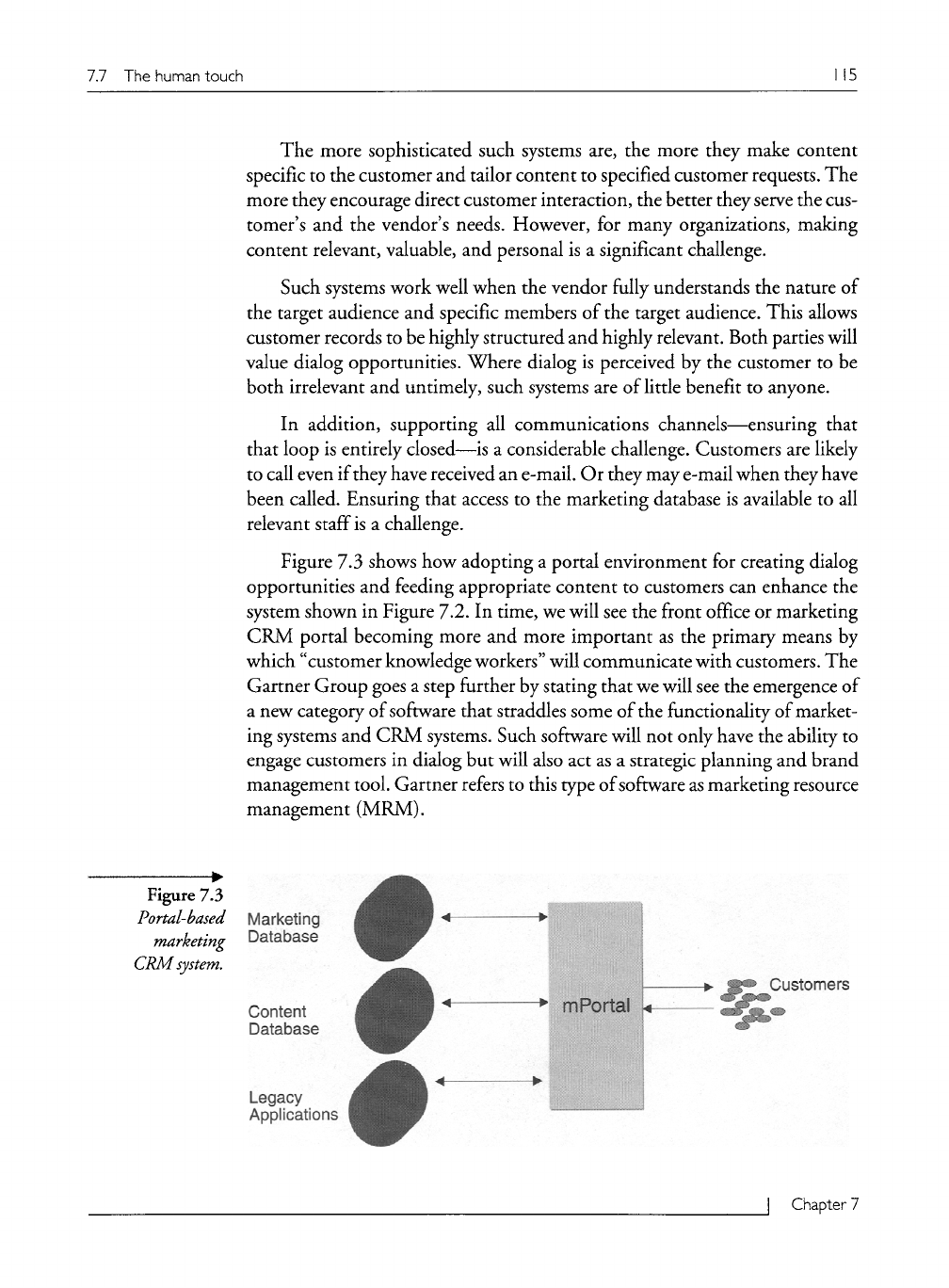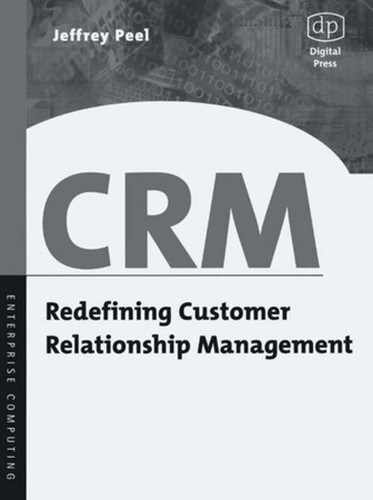
7.7 The human touch 113
7.7
creative. Testing campaigns for succinctness and understandability is good
practice because it helps relieve overburdened contact-center channels.
The human touch
Other chapters in the book also talk at length about the importance of engag-
ing in dialog where customers have the opportunity to engage with a person or
where the interaction has a "human touch."
It is worth debating here why customers request to speak directly to a per-
son. Often, it is because only people have the ability to address specific needs
that may fall outside the parameters of a predefined set of questions and
answers. In addition, people provide a listening ear and can deal with (or at
least listen to) a series of issues that may or not be related. People also have the
perceived ability to take ownership of a problem (even if, often, they never
actually address the problem).
When facilitated by machine, however, humans are much more effective.
And it is in this specific area that marketing-oriented CRM has the greatest
part to play. Up to this point, CRM has inadequately addressed these psycho-
logical factors~the behavioral aspects of customer engagement. It is in this
area that CRM needs to come of age. By adopting a greater awareness of mar-
keting processes, it will.
Figure 7.2 illustrates an arrangement whereby marketing campaigns can
be dispatched and managed within a closed-loop environment. Marketing
CRM systems are already beginning to emerge to support these processes.
Key to the process is the existence of a marketing database. For complex
or distributed organizations this is unlikely to reside in one location. How-
Figure 7.2
Simple marketing
CRA4 system.
I Chapter 7

114 7.7 The human touch
ever, it makes sense to have a centralized marketing database, even if it is in
the form of an aggregated data warehouse. The marketing database is likely
to contain, in addition to existing customers, prospects and suspects. How-
ever, to all intents and purposes, all customers, prospects, and suspects will
share a common characteristic in that they are relatively engaged with the
brand. They have all given permission to be communicated with by the
brand owner.
The marketing database will have a series of tools attached to it. The data
will be structured in such a way that records can be filtered using a host of
different parameters. Customer records should be tagged using XML descrip-
tors. Record descriptors might include customer lifestyle characteristics, level
of brand bonding, and degree of customer commitments as well as standard
demographic characteristics. Of course, the level of detail in the descriptor
will vary depending on the goods or services offered by the vendor. But
proactivity will be needed to secure the data required to populate these
descriptors, because just about all marketing activity will be driven by this
marketing database.
The importance of "open" descriptors of documents or records cannot
be overstated. Increasingly, XML (this topic is debated in more detail in
Chapter 4) describes all documents or interactions between point CRM
applications. Customer e-mails or VolP sessions are described using XML.
Therefore, all interaction units and aggregated data units (such as customer
records) need to be described in this common format or in other open stan-
dards as they emerge.
Over time, the customer database will be supplemented on the basis of
customer dialog. Customers not responding or not engaging in dialog will be
highlighted by the database. Analytical tools will also be used to mine the
database to generate dialog opportunities, all designed to enhance the degree
of customer knowledge in the database.
Dialog opportunities (not campaigns, because the overt reason for
dialog is unlikely to be sales related) will be administered by a dispatcher. The
dispatcher will deliver content to the customer designed to elicit response.
Response may be direct response via e-mail or via a microsite or landing
page on the vendor's main Web site. The customer's browsing behavior on
the site will be monitored, and specific content will be delivered depending
on the customer's need. The customer's overt behavior and content re-
quests will update and augment the customer's profile on the marketing
database.

7.7 The human touch 115
The more sophisticated such systems are, the more they make content
specific to the customer and tailor content to specified customer requests. The
more they encourage direct customer interaction, the better they serve the cus-
tomer's and the vendor's needs. However, for many organizations, making
content relevant, valuable, and personal is a significant challenge.
Such systems work well when the vendor fully understands the nature of
the target audience and specific members of the target audience. This allows
customer records to be highly structured and highly relevant. Both parties will
value dialog opportunities. Where dialog is perceived by the customer to be
both irrelevant and untimely, such systems are of little benefit to anyone.
In addition, supporting all communications channels~ensuring that
that loop is entirely closed--is a considerable challenge. Customers are likely
to call even if they have received an e-mail. Or they may e-mail when they have
been called. Ensuring that access to the marketing database is available to all
relevant staff is a challenge.
Figure 7.3 shows how adopting a portal environment for creating dialog
opportunities and feeding appropriate content to customers can enhance the
system shown in Figure 7.2. In time, we will see the front office or marketing
CRM portal becoming more and more important as the primary means by
which "customer knowledge workers" will communicate with customers. The
Gartner Group goes a step further by stating that we will see the emergence of
a new category of software that straddles some of the functionality of market-
ing systems and CRM systems. Such software will not only have the ability to
engage customers in dialog but will also act as a strategic planning and brand
management tool. Gartner refers to this type of software as marketing resource
management (MRM).
y
Figure 7.3
Portal-based
marketing
CRM system.
I Chapter 7
..................Content has been hidden....................
You can't read the all page of ebook, please click here login for view all page.
